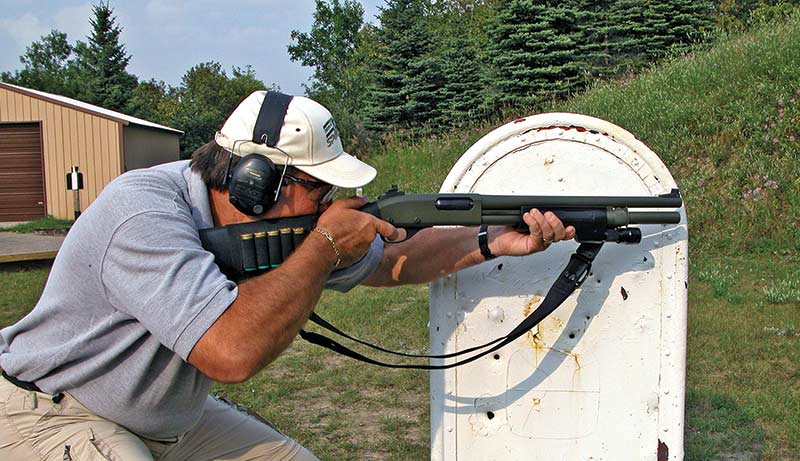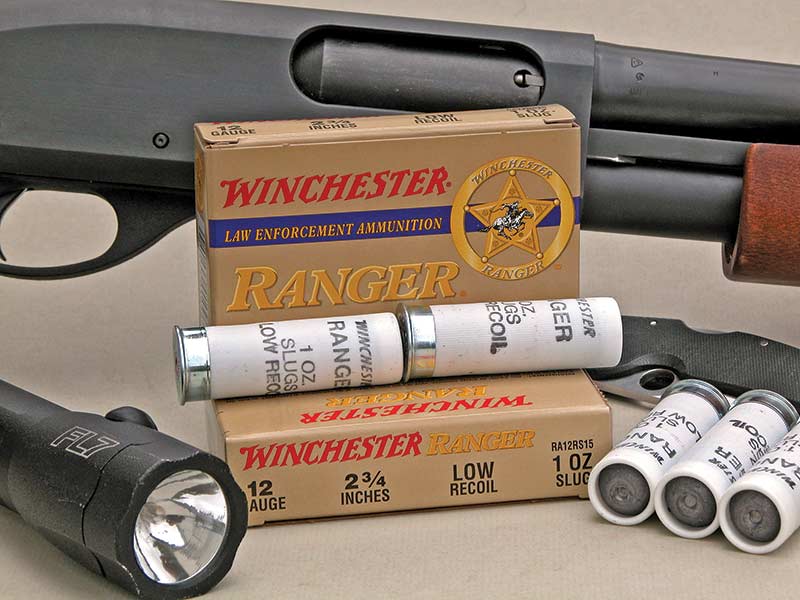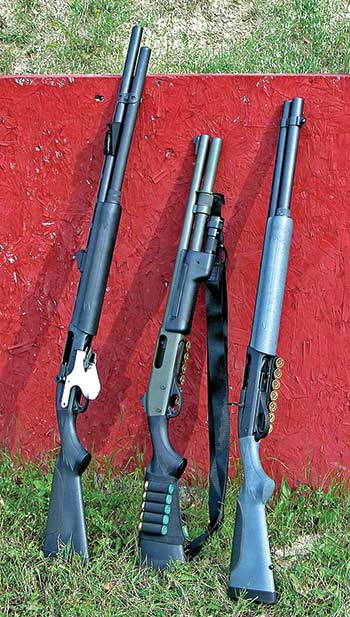Category: All About Guns
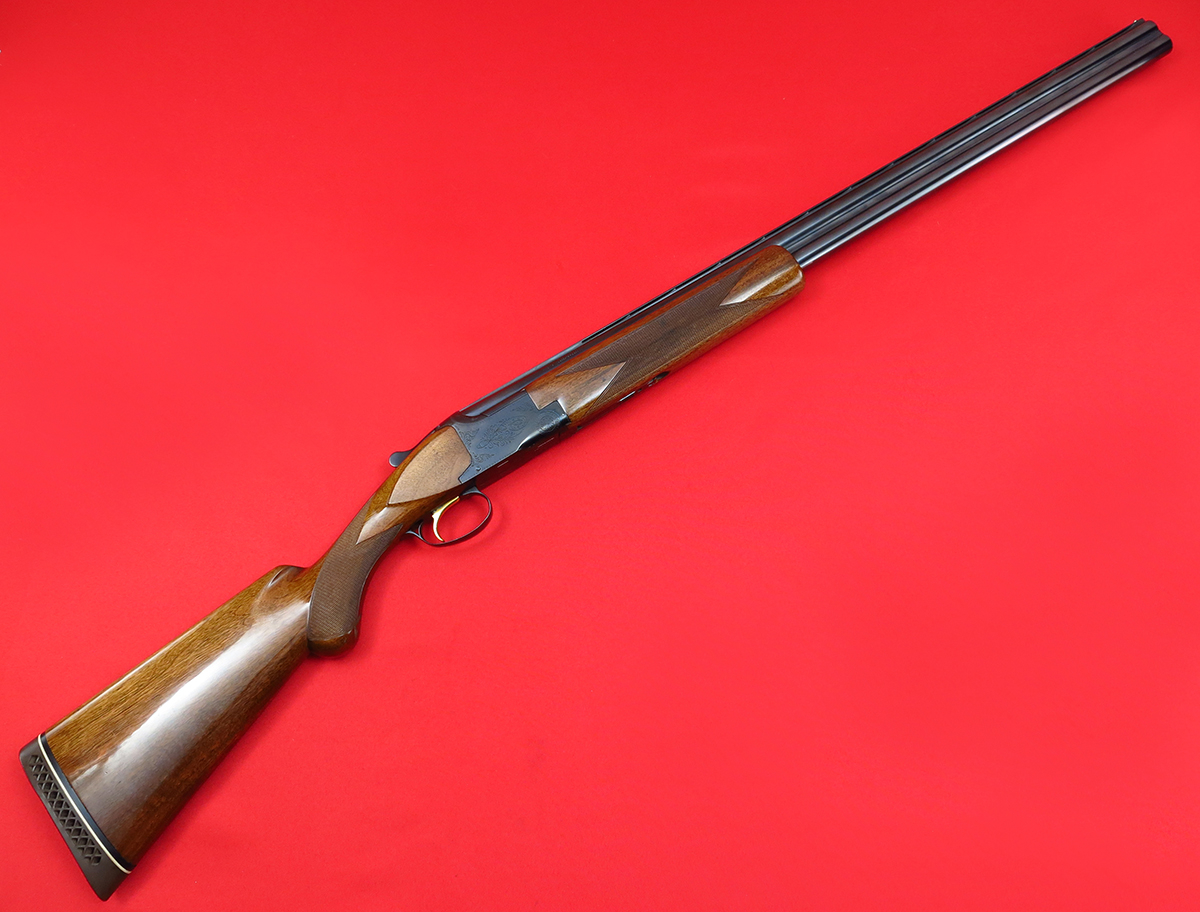
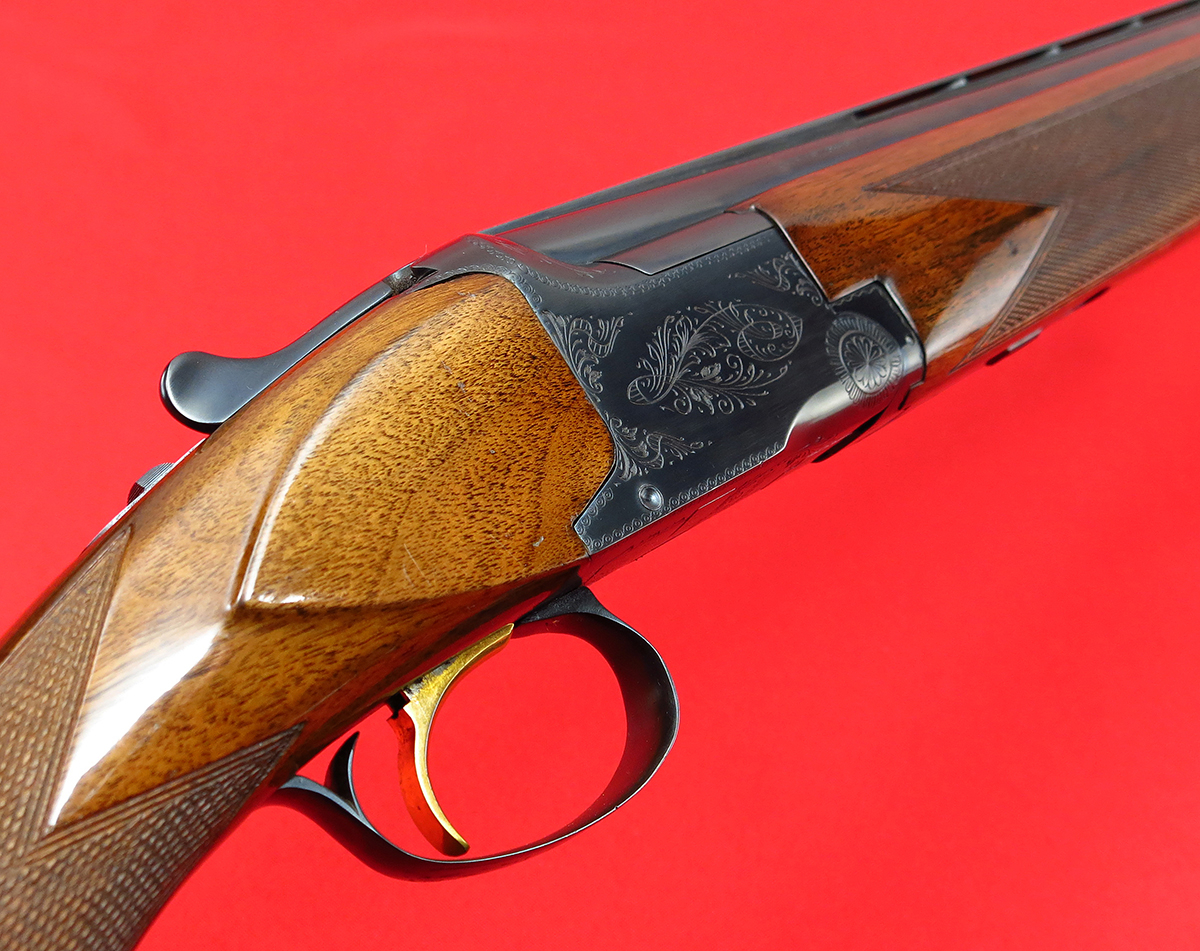
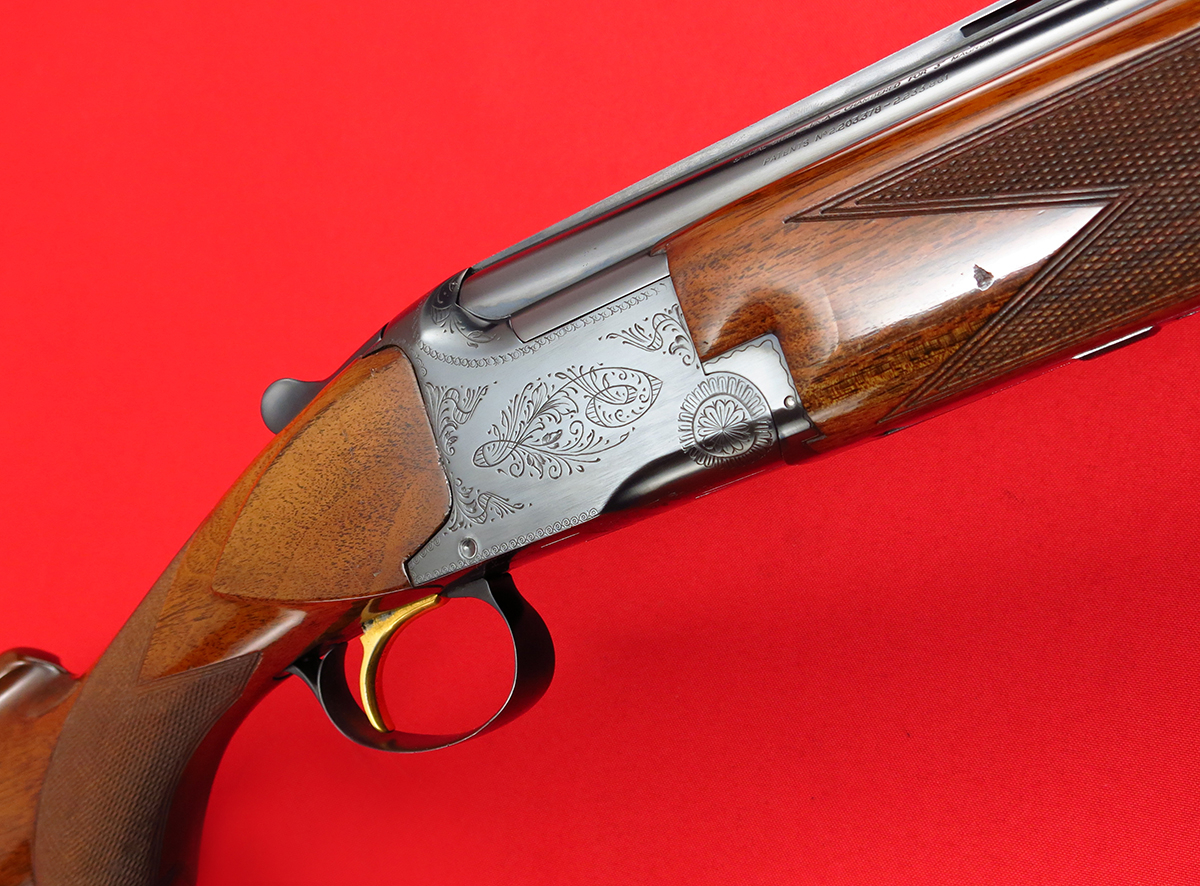
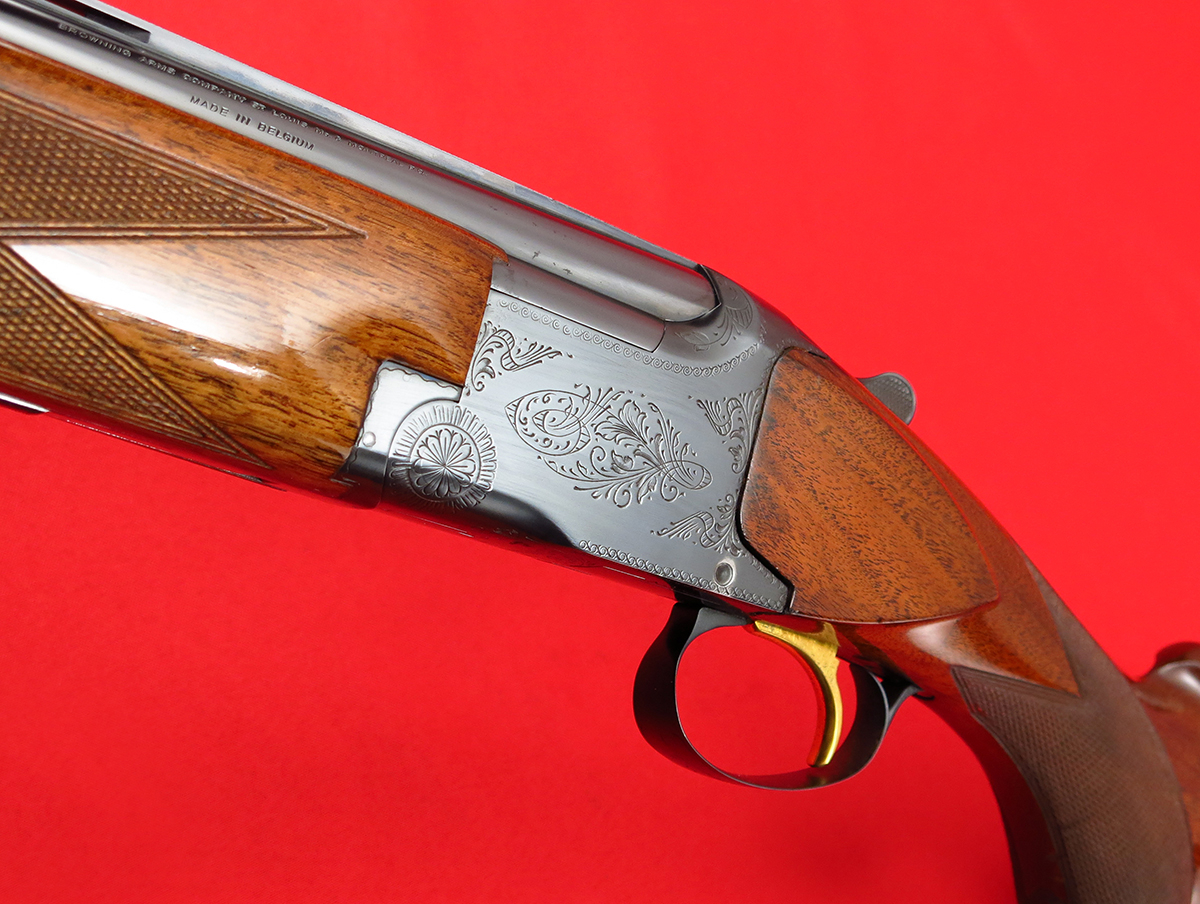
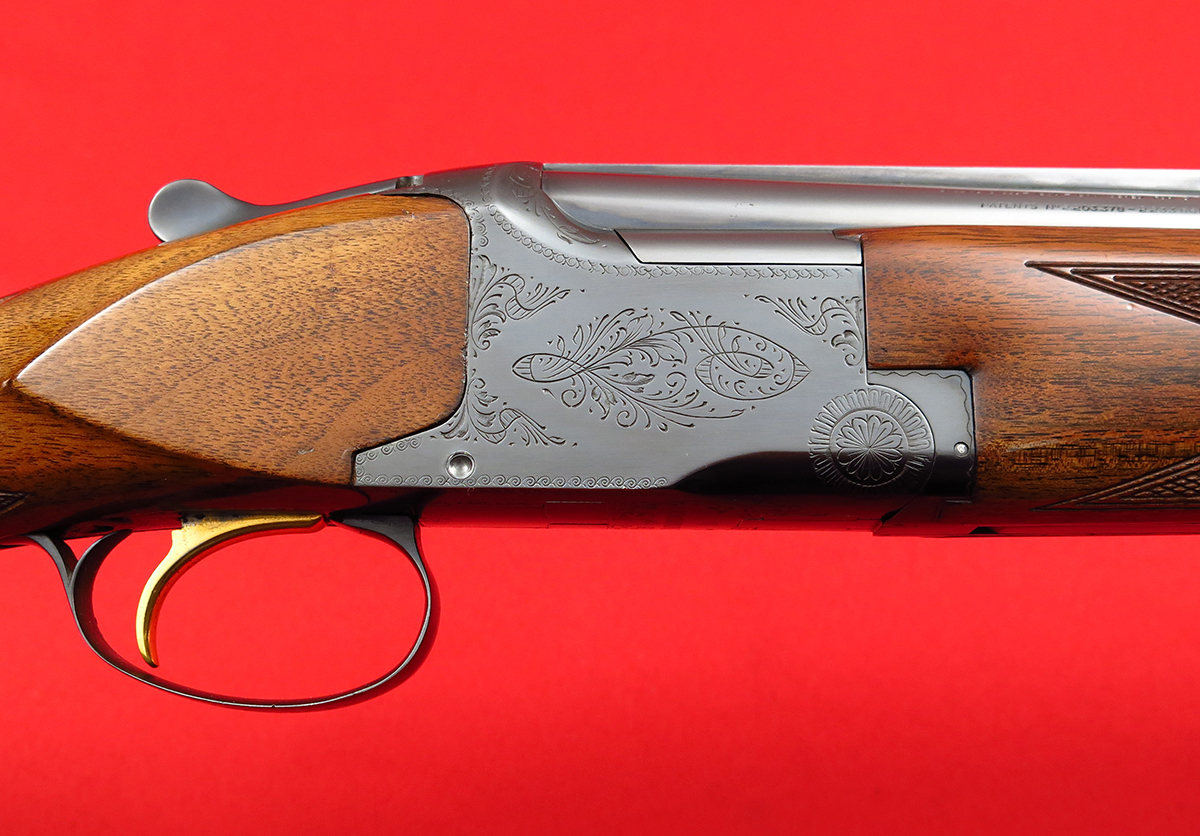
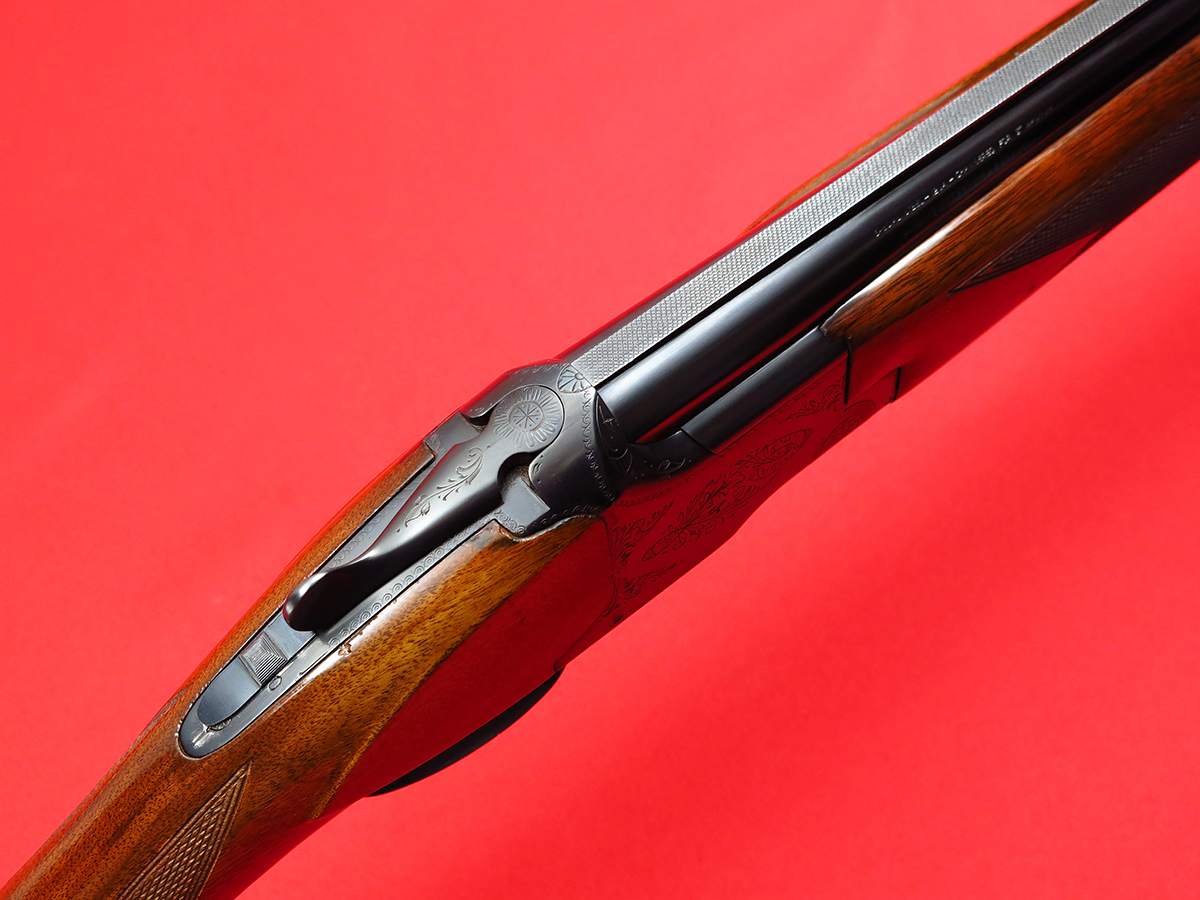
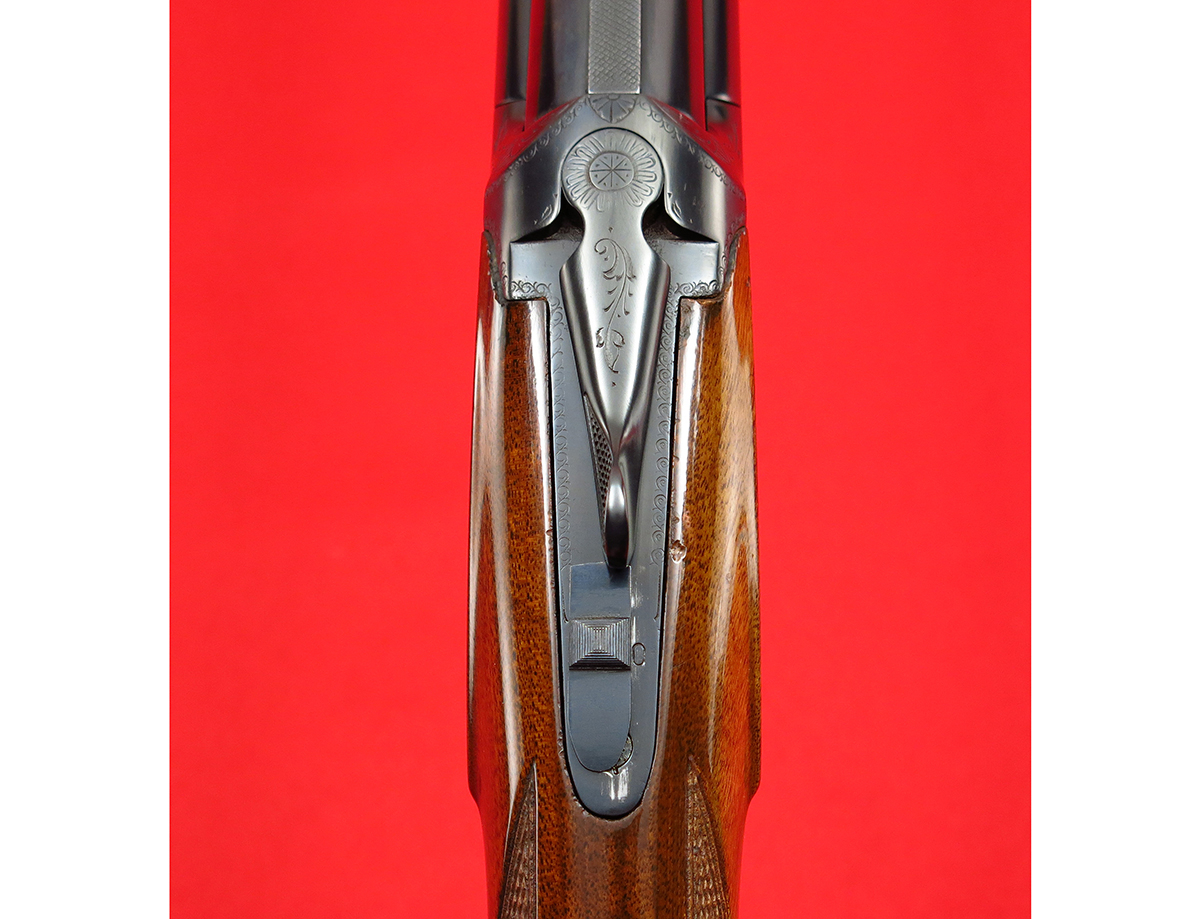
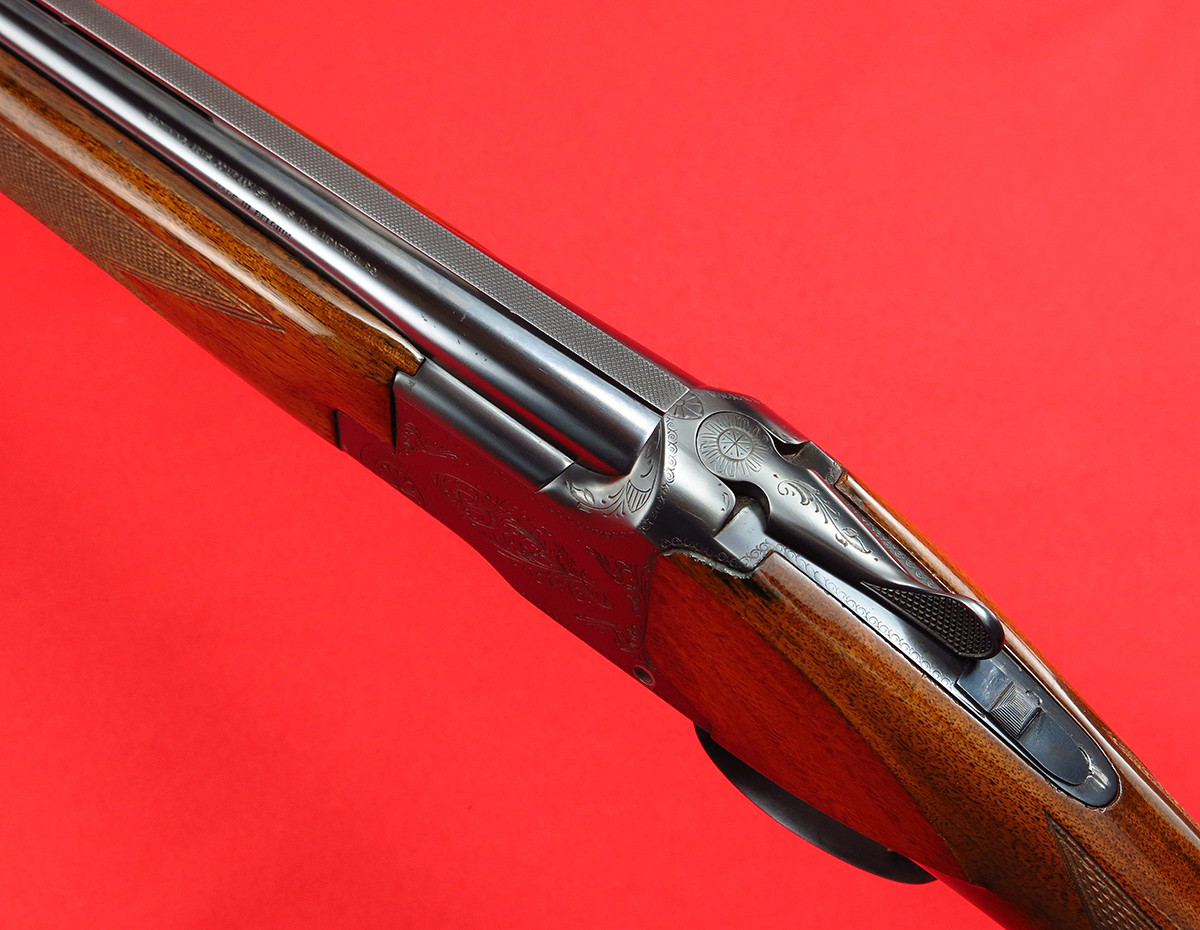
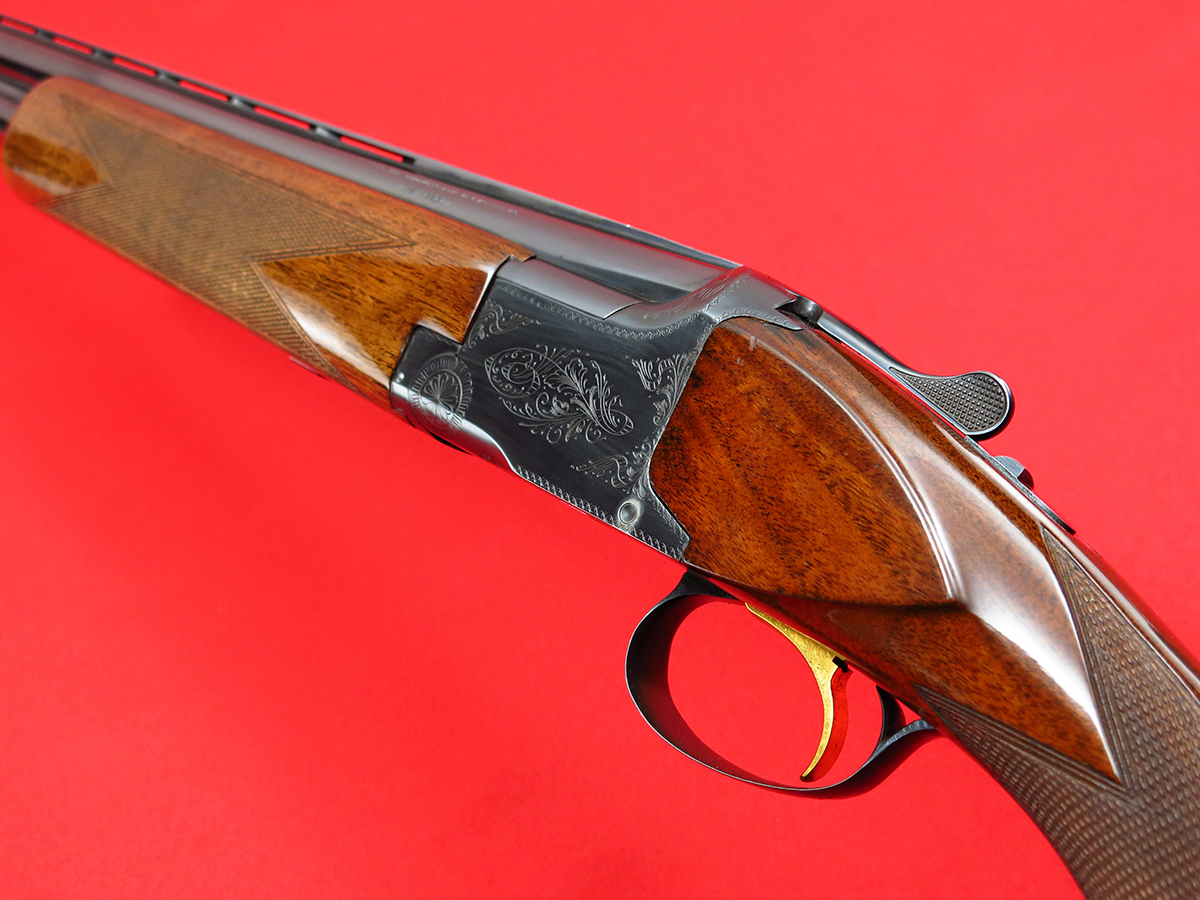
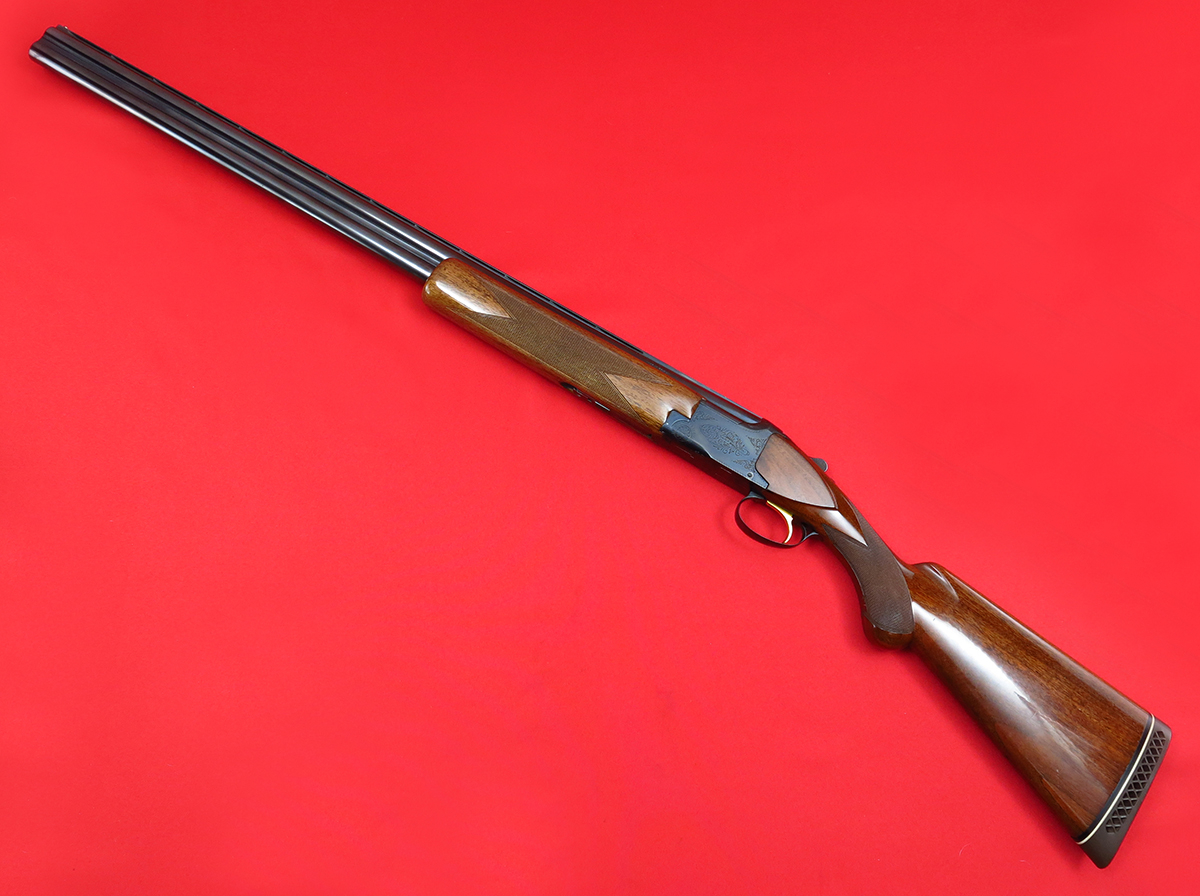
Weird Weapons Used in War

CHURCHILL’S 1911
In May 1915, following the failure of the Allied landings at Gallipoli, Winston Churchill the First Lord of the Admiralty and one of the architects of the landings was sacked. In November he returned to the army, he had graduated from Sandhurst in 1894 and had seen active service in India, Sudan and South Africa. Since 1902 he had been a reserve officer, a major in the yeomanry regiment the Queen’s Own Oxfordshire Hussars. On the 20th November, Churchill was attached to the 2nd Battalion Grenadier Guards to gain experience at the front and to prepare him for command of a brigade.
In December 1915, the Grenadier Guards rotated out of the frontline and Churchill toured nearby French sectors where he was gifted a steel Adrian helmet. Churchill wore this for the rest of his time on active service. The brigade Churchill had hoped for never materialised with Field Marshall Sir Douglas Haig willing only to give Churchill command of a battalion.
On 1st January 1916, Churchill was promoted to lieutenant colonel and given command of the 6th Battalion, Royal Scots Fusiliers replacing Lieutenant Colonel Herbert Northey.
The battalion had taken heavy casualties at the Battle of Loos and was suffering from low morale when he took command. Initially struggling to gain the trust of his officers and men, in part due to his cavalry training he quickly learnt the necessary commands for infantry and learnt how to use all the weapons the battalion was issued with.
During this time Churchill armed himself with a privately purchased American Colt Government Model (or Model 1911) with a specially made custom holster to fit his Sam Browne belt (see image #3). Bought in London, with London proof markings, Churchill had his name engraved onto the right side of the slide.
It is unclear if the pistol was bought by himself or he was given it as a gift. However, he liked the pistol and certainly favoured it over the often carried Webley revolver approved by the army and carried by many officers.
As a wealthy man Churchill had always enjoyed being able to purchase the latest and best campaign equipment. While serving in the Sudan he had carried a Mauser C96 and while in France he had his own water heater brought to the front line and had his wife send him wading boots and a sheepskin lined sleeping bag.
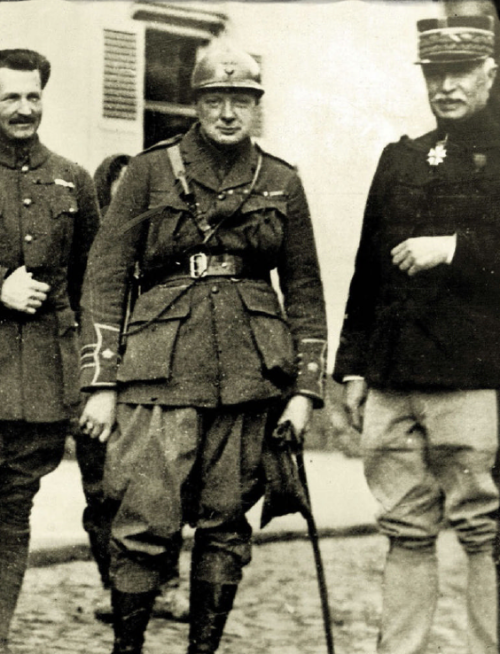
Churchill wearing his French Adrian helmet and possibly armed with his Colt 1911 (source)
When the battalion returned to the frontline Churchill was in his element visiting the trenches three times a day and directing the improvement of his sectors trench fortifications. He frequently came under fire but was said to be calm and collected even when his command post was shelled.
While Churchill commanded the battalion the sector remained quiet and was not called upon to undertake offensive operations. In May 1916 the understrength 6th and 7th battalions of the Royal Scots Fusiliers were ordered to amalgamate with the 7th battalion’s commanding officers taking command. Churchill spent 108 days in command and took this opportunity to return to London and was appointed Minister of Munitions in July 1917.
Churchill himself later said: “I shall always regard this period when I have had the honour to command a battalion of this prestigious regiment (Royal Scots Fusiliers) in the field, as one of the most memorable in my life.”
Sources:
Churchill and War, G. Best (source)
Finest Hour “In The Field” – Churchill and Northey, B. Nanny (source)
Churchill During the Great War (source)
Colt Government Model (civilian, 1911) IWM, (source)
Churchill Rejoins the Ranks, Military History Oct. 2015, B.P. Tolppanen
The foremost virtue of the combat shotgun is decisive stopping power. Nothing is 100 percent and, for all its virtues, the shotgun isn’t perfect. It kicks, especially with magnum buckshot or rifled slug loads. The recoil is more than many people can handle and requires a certain amount of size, weight, strength and experience.
I work with police on a fairly regular basis. I’ve asked recruits what part of their training is most unpleasant. Usually it is getting zapped with pepper spray and qualifying with the shotgun. Many recruits have never touched a firearm until they’ve started police training. They don’t practice with the shotgun any more than absolutely necessary to qualify, and such unfamiliarity leads to accidents.
In one case, an officer chambered a round while backing-up her partner during an arrest. After the suspect was in custody, she fumbled with the action, trying to clear the chamber before. The gun fired. A bystander on the other side of the street caught a pellet and lost an eye as a result.
The pattern of a shotgun is sometimes sold as a virtue with platitudes like “Just point it in the general direction and you’re bound to hit the bad guy.” It can also be a flaw. The shotgun loaded with buckshot puts a lot of projectiles in the air with every shot.
An officer responding to a domestic disturbance call was confronted by a woman at the door, some 18 yards away, armed with a high powered rifle. The officer took cover behind his vehicle, retrieving the shotgun from its rack and ordered the woman to put the rifle down. She fired at the officer and missed. As she reloaded for a second shot, the officer aimed center of mass and fired a fatal blast from the 12 gauge. Unquestionably the officer was justified in using deadly force. But behind the woman in the darkened room, invisible to the officer, was her six-year-old son. Two pellets from the spreading pattern struck and killed him.
Recoil and liability concerns have led many departments to rethink the role of the shotgun. Some have adopted the .223 or pistol-caliber carbines, either as replacements or in addition to the shotgun. Others are adopting new and better shotgun loads. The new low-recoil loads have solved most of our concerns with the shotgun.”
Federal, Remington and Winchester have done a terrific job in developing better loads. These low-recoil rounds kick less, increasing shooter
confidence and improving qualification scores. And with better technology they are actually more effective.
An armorer for a large police service commented, “With our old buckshot loads, on a 25-yard silhouette target, we might get only half the pellets hitting paper. With the new stuff we’ve had shotguns put all nine pellets into the head of the target at 25 yards.”
Full-power buckshot and slug loads are intended for big-game hunting. Ranges typically start at 25 yards, out to 100 yards or more with slugs. The combat shotgun is most often used at pistol ranges, often measured in feet rather than yards. The high velocity generated by hunting loads really isn’t needed.
According to the armorer, “The low-recoil ammunition isn’t just for practice. Our officers can select either buckshot or slugs, but only low recoil loads are authorized.”
This department believes low-recoil ammunition has enhanced the utility of the combat shotgun. Officers practice more, flinch less, shoot better and have more confidence. Greater accuracy and tighter patterns improve both officer and public safety.
Recent developments in recoil pads shouldn’t be overlooked. Competitive superstar Jerry Miculek called the Remington R3 recoil pad on his competition shotgun, “The best shooting accessory you can buy.” It is amazingly effective.
With better recoil pads and improved loads, the combat shotgun should do an even better job of guarding those who protect and serve.
For more information:
Federal Cartridge
Co., (800) 322-2342, www.federalcartridge.com
JP Enterprises, (651) 426-9196
www.jprifles.com
Remington Arms, (800)
243-9700, www.remington.com
Winchester Ammunition, (618) 258-2000
www.winchester.com
Wilson Combat, (870) 545-3618
www.wilsoncombat.com
This is absolutely something that happened often enough to be notable. Although the ammunition would not be interchangeable between American and German rifles, making resupply a considerable issue, the Germans in World War II had a certain habit of scavenging just about anything they could capture and by the end of the war they had collectively captured millions of rifles from everyone they fought and ultimately lost to. In typical German fashion, nearly every foreign piece of equipment captured intact got its own designation.
For instance, the M1 Garand received the designation “Selbstladegewehr 251(a)” while the M1 Carbine received the designation “Selbstladekarabiner 455(a)” with the (a) part of the designation in both cases denoting America as the country of origin. In additions to small arms, captured foreign tanks were extensively used throughout the war and captured foreign artillery saw considerable deployment along the Atlantic Wall, the coastal fortifications which ran from Norway to the Franco-Spanish border.
There are many photographs of Germans with captured allied weapons; some are even colorized.
Seen above are numerous Garand rifles and Thompson submachineguns. Seen below is an M1 Carbine.
Seen below is a captured Soviet SVT-40.




